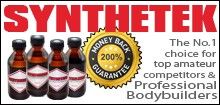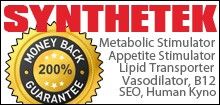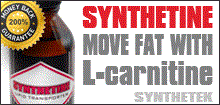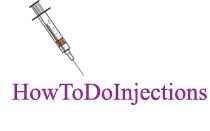Haloteston for it's effects on reducing/blocking 11beta-HSD1, and working as an anti-glucocorticoid, had been discussed at some length at CEM many years back. I have not looked over these in many years, it's a little out of my area. I found the Big A post from 2010, and was able to find these to add here for discussion.
Clin Endocrinol (Oxf). 2007 Mar;66(3):440-6.
Intra-adipose sex steroid metabolism and body fat distribution in idiopathic human obesity.
Wake DJ, Strand M, Rask E, Westerbacka J, Livingstone DE, Soderberg S, Andrew R, Yki-Jarvinen H, Olsson T, Walker BR.
Endocrinology Unit, Centre for Cardiovascular Science, Queen's Medical Research Institute, University of Edinburgh, Scotland, UK.
OBJECTIVE: Causes of visceral fat accumulation include glucocorticoid excess or decreased oestrogen/androgen ratio either in plasma or within adipose tissue. In obese subjects, the intra-adipose cortisol-generating enzyme 11beta-hydroxysteroid dehydrogenase type 1 (11beta-HSD1) is increased, but information on sex steroid signaling is sparse. We aimed to test associations between body fat or fat distribution and mRNA transcript levels for androgen and oestrogen receptors and for enzymes metabolizing sex steroids in adipose tissue. DESIGN: A cross-sectional study. PATIENTS: Forty-five healthy men and women with body mass index (BMI) 21-36 kg/m(2). MEASUREMENTS: In subcutaneous adipose biopsies we measured mRNAs for enzymes metabolizing local oestrogens (aromatase) and androgens [5alpha-reductase type 1; AKR1C2 (3alpha-HSD3); AKR1C3 (17beta-HSD5, 3alpha-HSD2)] and for sex steroid receptors [oestrogen receptor (ER)-alpha and androgen receptor (AR)]. We related these to body fat mass and distribution. RESULTS: Generalized obesity (BMI) was associated with increased aromatase mRNA (r = 0.35, P < 0.05). Central obesity (waist : hip ratio) was associated with mRNA for AKR1C2 (r = 0.28, P < 0.05) and AKR1C3 (r = 0.38, P < 0.01) but not aromatase (r = 0.06). 5alpha-Reductase type 1, ER and AR mRNA levels did not predict fat amount or its distribution. CONCLUSION: These data on transcript levels suggest that, in idiopathic obesity, increased intra-adipose oestrogen generation by aromatase predicts peripheral fat distribution, while androgen metabolism by AKR1C isoforms predicts central fat distribution, supporting the hypothesis that intra-adipose sex steroid metabolism is a determinant of gynoid vs. android patterns of body fat.
Obesity (Silver Spring). 2007 May;15(5):1155-63.
Omental 11beta-hydroxysteroid dehydrogenase 1 correlates with fat cell size independently of obesity.
Michailidou Z, Jensen MD, Dumesic DA, Chapman KE, Seckl JR, Walker BR, Morton NM.
Endocrinology Unit, Centre for Cardiovascular Science, Queen's Medical Research Institute, University of Edinburgh, 47 Little France Crescent, Edinburgh EH16 4TJ, UK.
OBJECTIVES: In ideopathic obesity, there is evidence that enhanced cortisol regeneration within abdominal subcutaneous adipose tissue may contribute to adiposity and metabolic disease. Whether the cortisol regenerating enzyme, 11beta-hydroxysteroid dehydrogenase type 1 (11betaHSD1), or glucocorticoid receptor (GRalpha) levels are altered in other adipose depots remains uncertain. Our objective was to determine the association between 11betaHSD1 and GRalpha mRNA levels in four distinct adipose depots and measures of obesity and the metabolic syndrome. RESEARCH METHODS AND PROCEDURES: Adipose tissue biopsies were collected from subcutaneous (abdominal, thigh, gluteal) and intra-abdominal (omental) adipose depots from 21 women. 11betaHSD1 and GRalpha mRNA levels were measured by real-time polymerase chain reaction. Body composition, fat distribution, fat cell size, and blood lipid, glucose, and insulin levels were measured. RESULTS: 11betaHSD1 mRNA was highest in abdominal subcutaneous (p < 0.001) and omental (p < 0.001) depots and was positively correlated with BMI and visceral adiposity in all depots. Omental 11betaHSD1 correlated with percent body fat (R = 0.462, p < 0.05), fat cell size (R = 0.72, p < 0.001), and plasma triglycerides (R = 0.46, p < 0.05). Conversely, GRalpha mRNA was highest in omental fat (p < 0.001). GRalpha mRNA was negatively correlated with BMI in the abdominal subcutaneous (R = -0.589, p < 0.05) and omental depots (R = -0.627, p < 0.05). Omental GRalpha mRNA was inversely associated with visceral adiposity (R = -0.507, p < 0.05), fat cell size (R = -0.52, p < 0.01), and triglycerides (R = -0.50, p < 0.05). DISCUSSION: Obesity was associated with elevated 11betaHSD1 mRNA in all adipose compartments. GRalpha mRNA is reduced in the omental depot with obesity. The novel correlation of 11betaHSD1 with omental fat cell size, independent of obesity, suggests that intracellular cortisol regeneration is a strong predictor of hypertrophy in the omentum.
11beta-hydroxysteroid dehydrogenase type 1 mRNA is increased in both visceral and subcutaneous adipose tissue of obese patients.Desbriere R, Vuaroqueaux V, Achard V, Boullu-Ciocca S, Labuhn M, Dutour A, Grino M.
Service de Gynécologie/Obstétrique, CHU Nord, Marseille, France.
OBJECTIVE: Data from rodents provide evidence for a causal role of 11beta-hydroxysteroid dehydrogenase type 1 (11beta-HSD-1) in the development of obesity and its complications. In humans, 11beta-HSD-1 is increased in subcutaneous adipose tissue (SAT) of obese patients, and higher adipose 11beta-HSD-1 was associated with features of the metabolic syndrome. To date, there is no evidence for an increased expression of 11beta-HSD-1 in human visceral adipose tissue (VAT), although VAT is the major predictor for insulin resistance and the metabolic syndrome. RESEARCH METHODS AND PROCEDURES: 11beta-HSD-1 and hexose-6-phosphate dehydrogenase (the enzyme responsible for the synthesis of nicotinamide adenine dinucleotide phosphate, the cofactor required for 11beta-HSD-1 oxoreductase activity) mRNA levels were measured using real-time quantitative reverse transcriptase-polymerase chain reaction in abdominal SAT and VAT biopsies obtained from 10 normal-weight and 12 obese women. Adiponectin mRNA was used as an internal control. RESULTS: 11beta-HSD-1 mRNA concentrations were significantly increased in both SAT and VAT of obese patients (720% and 450% of controls, respectively; p < 0.05) and correlated with hexose-6-phosphate dehydrogenase mRNA levels. The level of VAT 11beta-HSD-1 mRNA correlated with anthropometric parameters: BMI (r = 0.41, p = 0.05), waist circumference (r = 0.44, p = 0.04), abdominal sagittal diameter (r = 0.51, p = 0.02), and percentage fat (r = 0.51, p = 0.02). DISCUSSION: Our results demonstrate for the first time that 11beta-HSD-1 mRNA expression is increased in VAT from obese patients. They strengthen the importance of 11beta-HSD-1 in human obesity and its associated complications and suggest the need of clinical studies with specific 11beta-HSD-1 inhibitors
 lol.
lol. 
































.gif)












































